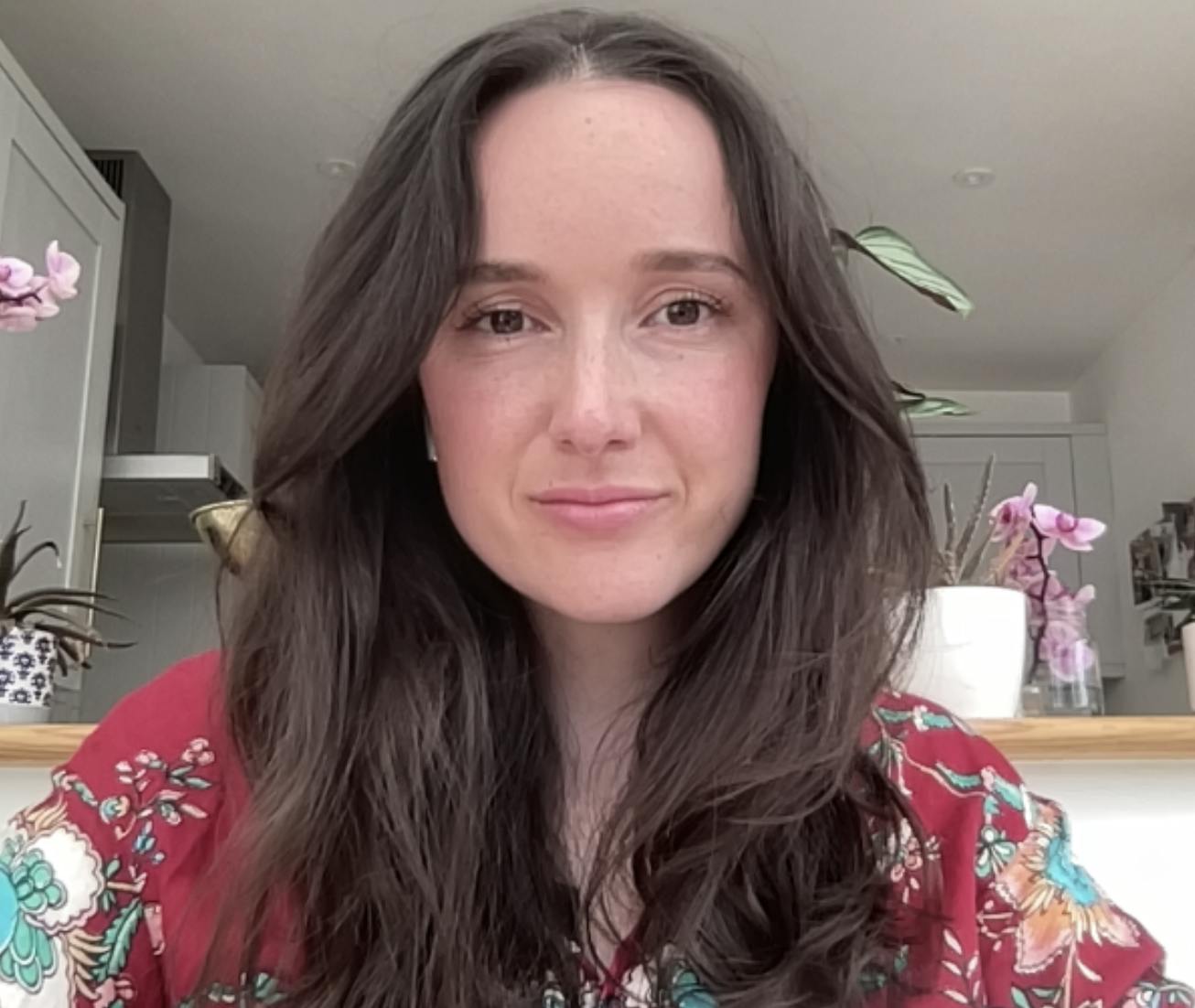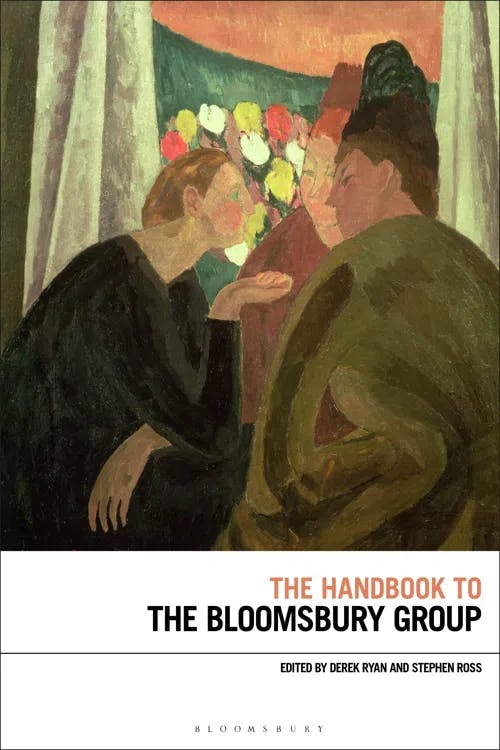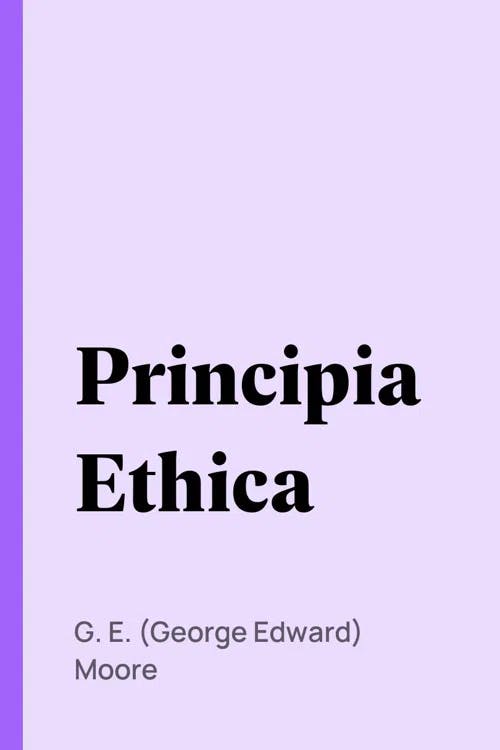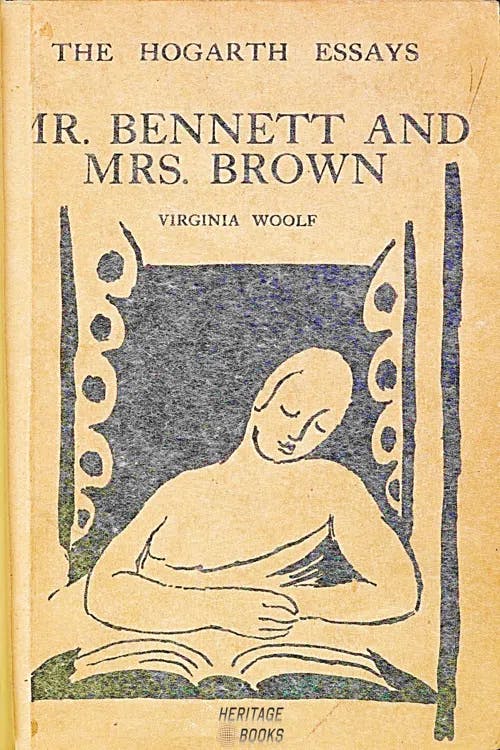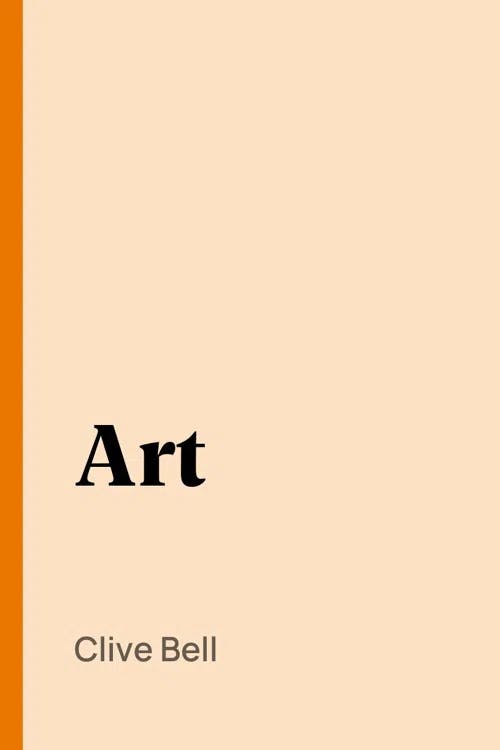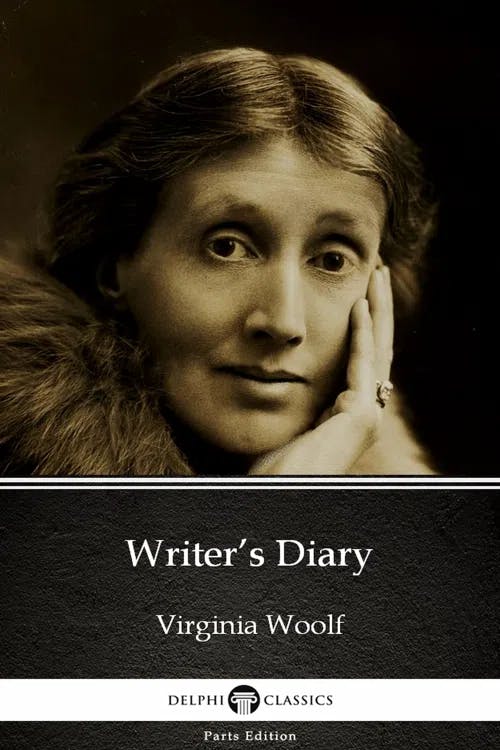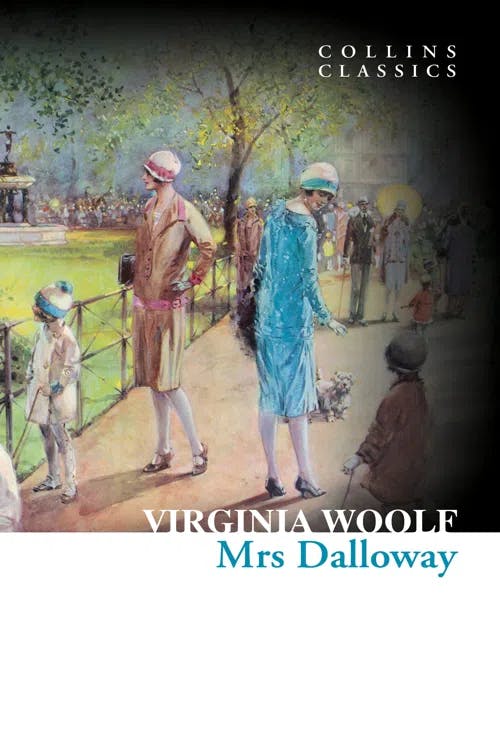What is the Bloomsbury Group?
PhD, Media Arts and English Literature (Royal Holloway, University of London)
Date Published: 10.10.2023,
Last Updated: 22.11.2023
Share this article
Defining the Bloomsbury Group
The Bloomsbury Group was a loose network of writers, artists, and intellectuals who regularly met, lived, and worked together in and around central London’s leafy Bloomsbury district during the early twentieth century. The group is sometimes simply referred to as Bloomsbury, with individual members referred to as “Bloomsberries” (Helt and Detloff, Queer Bloomsbury, 2016) or “Bloomsburyites” (Childs, Modernist Literature, 2011). These terms operate as a shorthand for a bohemian, experimental artistic energy that forged new ways of being and being together. These creative forces can be seen across the Bloomsbury Group’s art, writing, and the rhythms of their everyday lives. Rejecting the overhanging structures and traditions of the Victorian era, the group emerged alongside British modernism and the avant-garde, with its members responding to the turbulence of modernity and navigating questions of how art, truth and ethics operated.
Questions of who, where, and when
Recent scholarship has explored the trouble with straightforward definitions concerning a network that was, as Andrzej Gasiorek writes, “not a monolithic entity but a group of disparate individuals” (A History of Modernist Literature, 2015). Indeed, tracing Bloomsbury’s boundaries becomes even more complicated, as some Bloomsberries themselves resisted the idea of a unified “group”: when questioned about the circle, for example, prominent member Vanessa Bell “implied that it was quite unimportant and that there never was such a thing as the ‘Bloomsbury Group’” (Selected Letters, 1993). Yet, as Derek Ryan and Stephen Ross discuss, the evasion seen in Bloomsbury’s correspondence
indicates that Bell was keen to claim that there was no such thing as Bloomsbury precisely because of how profoundly there was. (2018)
Edited by Derek Ryan and Stephen Ross
indicates that Bell was keen to claim that there was no such thing as Bloomsbury precisely because of how profoundly there was. (2018)
So, what, where, and who was Bloomsbury? Brenda Helt and Madelyn Detloff remind us that it was an “urban geographical location as well as a signifier for a group of people living, thinking, and creating together” (Queer Bloomsbury, 2016). Bloomsbury spanned multiple sites, and unfolded through decades of intimate — sometimes sexual, sometimes platonic — domestic dynamics. To understand the contours of the complex network, what follows is an overview of Bloomsbury’s origins, activities, outputs, and central ideas, which also maps some of its many members and associates.
Origins
The group began not in Bloomsbury, but at Cambridge University. Leonard Woolf, Lytton Strachey and John Maynard Keynes were all members of a secret society called the “Cambridge Apostles,” who were inspired by the philosophical works of G. E. Moore (Hanna, Key Concepts in Modernist Literature, 2008). The Apostles were particularly taken by Moore’s Principia Ethica and his meditations on the need to appreciate beauty and the power of friendship:
By far the most valuable things, which we know or can imagine, are certain states of consciousness, which may be roughly described as the pleasures of human intercourse and the enjoyment of beautiful objects. No one, probably, who has asked himself the question, has ever doubted that personal affection and the appreciation of what is beautiful in Art or Nature, are good in themselves; nor, if we consider strictly what things are worth having purely for their own sakes, does it appear probable that any one will think that anything else has nearly so great a value as the things which are included under these two heads.
(1903 [2016])
G. E. Moore
By far the most valuable things, which we know or can imagine, are certain states of consciousness, which may be roughly described as the pleasures of human intercourse and the enjoyment of beautiful objects. No one, probably, who has asked himself the question, has ever doubted that personal affection and the appreciation of what is beautiful in Art or Nature, are good in themselves; nor, if we consider strictly what things are worth having purely for their own sakes, does it appear probable that any one will think that anything else has nearly so great a value as the things which are included under these two heads.
(1903 [2016])
Spurred by questions of how art and beauty intersect with ethics and truth, Leonard Woolf, Strachey and Maynard Keynes became close friends with Saxon Sydney-Turner, Clive Bell and brothers Thoby and Adrian Stephen at Cambridge’s Trinity College in 1899. The Stephen brothers introduced their friends to their sisters, Vanessa Stephen (later Bell) and Virginia Stephen (later Woolf). The encounters between the Apostles and the Stephen sisters, Ryan and Ross write, birthed “[t]he Bloomsbury of intimacy, irreverence, and innovation,” that would continue to blossom over the next two decades (2018).
Activities
Following the death of their father in 1904, Vanessa, Virginia, Adrian and Thoby Stephen moved into 46 Gordon Square in Bloomsbury. It was this home that hosted Bloomsbury’s first regular meetings. These meetings were split into two separate sets: “Thursday Evenings” hosted conversation for writers and critics, and was set up by Thoby Stephen; and “The Friday Club” was angled at artists, and was started by Vanessa Bell. The Thursday meetings included Strachey, the art critic Clive Bell, Leonard Woolf, John Maynard Keynes, and the writer and publisher David “Bunny” Garnett; and “created a space for literary, philosophical, and often downright bawdy chat” (Ryan and Ross, 2018). Fridays regularly saw Duncan Grant, John Nash, Henry Lamb, Edward Wadsworth, and — after he was introduced in 1910 — the artist and critic Roger Fry.
The Group first found its name in 1912, when Fry organized an art exhibition featuring many artists in Bloomsbury’s circle, including Vanessa Bell and Grant. This was the “Second Post-Impressionist Exhibition.” The first, “Manet and the Post-Impressionists” in 1910, was one of the components that prompted Virginia Woolf’s famous remark that “on or about December 1910 human character changed” (Mr. Bennett and Mrs. Brown, 1924 [2019]). Woolf continues:
I am not saying that one went out, as one might into a garden, and there saw that a rose had flowered, or that a hen had laid an egg. The change was not sudden and definite like that. But a change there was, nevertheless; and, since one must be arbitrary, let us date it about the year 1910. (1924 [2019])
Virginia Woolf
I am not saying that one went out, as one might into a garden, and there saw that a rose had flowered, or that a hen had laid an egg. The change was not sudden and definite like that. But a change there was, nevertheless; and, since one must be arbitrary, let us date it about the year 1910. (1924 [2019])
This demonstrates just how radically new these exhibitions were. For Woolf, it gestured towards an inscrutable ontological shift. For others in London, it was — as Peter Childs writes — a “shocking” and novel experience to see experimental artwork like that of Paul Cézanne, Vincent Van Gogh, Paul Gauguin, Henri Matisse, and Pablo Picasso (Modernist Literature, 2011). As Quentin Bell later reflected, Fry became the “best-hated man in the London art world,” such was the reaction to his experimental exhibition (Bloomsbury, 1986).
The group’s meetings moved as their members did. Living in different configurations in houses in Bloomsbury and, as the First World War scattered the group’s members, further afield in Richmond, and the Sussex countryside. These living arrangements often transgressed traditional ideas of cohabitation based around family units or marriage. For example, in 1911 Adrian and Virginia Stephen lived in 38 Brunswick Square with Leonard Woolf (Virginia would marry Leonard in 1912), as well as their friends Maynard Keynes and Grant (Ryan and Ross, 2018). Vanessa (following her marriage to Clive Bell and an affair with Fry) moved to Charleston Farm in the Sussex countryside with her lover Grant and her children, where many others would also visit and reside, including Clive Bell, Maynard Keynes, the Woolfs, Strachey, and Grant’s lover Garnett (Helt and Detloff, 2016). Ryan and Ross view these various moves as “a relocation of Bloomsbury” rather than “a break from it” (2018). Indeed, Vanessa Bell and the group decorated Charleston like a canvas, with its walls, furnishings, woodwork, furniture, and even a bathtub adorned with painted patterns, portraits and nudes. Although no longer in Bloomsbury, the lively salon culture continued.
Hogarth Press
Having taught themselves to type and print by hand, Virginia and Leonard Woolf began the Hogarth Press in 1917 in the drawing-room of their Richmond home (Bradshaw and Dettmar, A Companion to Modernist Literature and Culture, 2008). Their first publication was Two Stories (1917), which included illustrations by artist Dora Carrington and was hand-printed and bound to produce 134 copies. From these small beginnings, the Woolfs expanded Hogarth, where it would print 450 titles — including works by T. S. Eliot, E. M. Forster, Katherine Mansfield, and translations of Sigmund Freud — before Virginia’s suicide in 1941. Dust jackets for Virginia Woolf’s books were designed by Vanessa Bell, revealing yet another facet of Bloomsbury’s interwoven network of collaboration.
Central ideas
Although views varied throughout the network, several shared attitudes can be seen throughout their works. Childs observes that the Bloomsbury Set was one of the forces that drove a “new aesthetic sensibility that showed a desire for change” (2011) — a key characteristic of British modernism. Central to this, as Jesse Wolfe has explored in Bloomsbury, Modernism and the Reinvention of Intimacy (2011), was a critical examination of Victorian values, like those of monogamy, marriage, heteronormativity, sexual selfhood, morality, the mind, and human development.
Artistic experimentation
From the bold forms and colors in Vanessa Bell’s post-impressionist paintings, to the ethereal interwoven streams of consciousness in Virginia Woolf’s The Waves (1931), members of the Bloomsbury Group experimented with what art could do, what it could represent, and which emotions it could provoke. Formal experimentation was, then, crucial to Bloomsbury’s aesthetics. In 1914, Clive Bell posited his thoughts on how “significant form” is crucial to all meaningful artwork:
There must be some one quality without which a work of art cannot exist; possessing which, in the least degree, no work is altogether worthless. What is this quality? What quality is shared by all objects that provoke our aesthetic emotions? [...] Only one answer seems possible—significant form. In each, lines and colours combined in a particular way, certain forms and relations of forms, stir our aesthetic emotions. (1914 [2005])
Clive Bell
There must be some one quality without which a work of art cannot exist; possessing which, in the least degree, no work is altogether worthless. What is this quality? What quality is shared by all objects that provoke our aesthetic emotions? [...] Only one answer seems possible—significant form. In each, lines and colours combined in a particular way, certain forms and relations of forms, stir our aesthetic emotions. (1914 [2005])
Members of the Bloomsbury Group would experiment with various forms throughout their lives. For instance, Vanessa Bell’s paintings shift between figurative pieces like “The Tub” (1917) and total abstraction, as in “Abstract Painting” (1914). Grant’s experimental “Abstract Kinetic Collage Painting with Sound” (1914) is a 15-foot scroll painted and pasted with colorful rectangles, and was intended to be rolled past the viewer’s eyes in a camera-box, accompanied by sound and in motion, which challenges the fixity of the form. From painted scrolls to skirting boards; Fry’s Omega Workshops Ltd. was a design company that brought modernism into the home, with artists decorating furniture and fabrics. This radical play occurred in literature, too. Virginia Woolf referred to The Waves (1931) in her diaries not as a novel but, rather, as a “play-poem idea;” which saw the boundaries between mind, body and world become permeable and fluid:
the idea of some continuous stream, not solely of human thought, but of the ship, the night etc, all flowing together [...]. (1953 [2017])
Virginia Woolf
the idea of some continuous stream, not solely of human thought, but of the ship, the night etc, all flowing together [...]. (1953 [2017])
Politics
As Gasiorek observes, although Bloomsbury’s approach to things could be disparate and varied, it is “nonetheless possible to identify a generally agreed Bloomsbury attitude to the First World War,” which he defines as an “aestheticist pacifism” (2015). Grant and his lover Barnett, for example, became farm laborers in order to avoid fighting during WWI, and were eventually recognized as conscientious objectors (“Lifestyle and Legacy of the Bloomsbury Group”). Jonathan Atkin has explored the principles of Bloomsbury’s pacifism in A War of Individuals (2002), which sets out their opposition as “grounded upon moral, humanistic or aesthetic precepts.” Bloomsbury negotiated the impact of the war through their art, such as Virginia Woolf’s Mrs Dalloway (1925) with its depiction of Septimus’s shell-shock and suicide. Woolf would later write in her diary: “Thinking is my fighting” (The Diary of Virginia Woolf, 1936–1941 [2023]).
Indeed, Bloomsbury fought against many of their Victorian forebearer’s attitudes, and the group generally identified with liberal, feminist, and — especially in the case of Leonard Woolf — socialist politics. However, as Gretchen Holbrook Gerzina writes, it is important to analyze the contexts, subjects and evolutions of these fights, especially in regards to race and empire (The Cambridge Companion to the Bloomsbury Group, 2014). As Gerzina notes, many of Bloomsbury’s ancestral or immediate families served the empire and as the Bloomsbury Set grew up, they “had begun to reject most of what it stood for” (2014) as they adopted more progressive ways of living. Many members wrote anti-imperialist essays, like Virginia Woolf’s “Thunder at Wembley” (1924), or channeled their critiques into works like E. M. Forster’s A Passage to India (1924), or Leonard Woolf’s The Village in the Jungle (1913) and Stories from the East (1921). However, Gerzina reminds us that these fictional and lived worlds that Bloomsbury created for itself did not “entirely reject the racial attitudes engendered by the very imperialism they had come to detest” (2014). Bloomsbury’s art and politics allow for a rich exploration of the contexts and contours of the early twentieth century, and the relationship between British modernism, metropolitanism, power, race, empire and colonialism.
Queerness
It is impossible to talk of Bloomsbury without talking about its queerness. Indeed, as Helt and Detloff write:
The very phrase “queer Bloomsbury” is in its way redundant, implying that there could somehow be a neutral or “unqueer” Bloomsbury. (2016)
The Bloomsbury Group explored the meaning of family, love, sexuality, desire and gender, and set up practices that constituted, Helt and Detloff continue, “a way of living sexually, intellectually, artistically, ethically and intimately” (2016). At this time, homosexuality in Britain was illegal and books like Radclyffe Hall’s The Well of Loneliness were banned due to their representation of sexual “inversion” (1928 [2014]), and yet Bloomsbury’s queer subculture could be seen in their own relationships — like that of Virginia Woolf and Vita Sackville-West (explored in Sarah Gristwood’s Vita & Virginia, 2018), or the happy arrangement between Vanessa Bell, Grant and Barnett (Clarke, Queer Bloomsbury, 2016). The Bloomsbury Group set up queer domestic practices that pushed beyond family units or marriage as the only ways to cohabit. Bloomsbury’s queer subcultures were also expressed in their art — in Virginia Woolf’s Mrs Dalloway, for example, Clarissa thinks of Sally and wonders:
But this question of love (she thought, putting her coat away), this falling in love with women. Take Sally Seton; her relation in the old days with Sally Seton. Had not that, after all, been love? (1925 [2013])
Virginia Woolf
But this question of love (she thought, putting her coat away), this falling in love with women. Take Sally Seton; her relation in the old days with Sally Seton. Had not that, after all, been love? (1925 [2013])
Criticism
Bloomsbury has received heavy criticism since its inception, and has often been used as a shorthand for a snobbish elitism. As Helt and Detloff write, “Bloomsbury had its detractors before it even had a convenient label to which criticism might be appended” (2016). Indeed, after a quarrel with Fry after working together at the Omega Workshops, Wyndham Lewis became, in Julian Hanna’s words, Bloomsbury’s “most notorious enemy” (Key Concepts in Modernist Literature, 2008). Lewis satirized the group as a “select and snobbish club” in The Apes of God (1930 [1965]). Later, Hugh Kenner’s study of modernism would similarly depict Bloomsbury as elitist, insular, and unoriginal (A Sinking Ship, 1988). However, as Christopher Reed’s essay, “Bloomsbury Bashing: Homophobia and the Politics of Criticism in the Eighties” reveals, much of the early criticism that has been angled at Bloomsbury has been mired in “explicit homophobia,” misogyny and misinformation (1991).
Influence
Bloomsbury is bound to the legacy of British modernism, which it helped to mold with its formal play and formation of ways of living and working that existed outside of Victorian conventions.. Interest in the set has persisted, too, with recent examples including Life in Squares (Kaijser, 2015), a BBC drama depicting the lives and loves of Bloomsbury, and Charleston’s continuing popularity as a tourist attraction and exhibition space which explores the group’s lasting legacy. As Virginia Nicholson — Vanessa Bell’s granddaughter, a historian, and the Charleston Trust’s deputy chair — remarks: Bloomsbury and Charleston is “not just about a few pretty patterns on the walls [...] it’s about a way of life and a set of values” (Rustin, “Boom time for the Bloomsbury group,” 2015). To this day, audiences continue to be fascinated by these lived practices and values, as well as the influential art that this subculture catalyzed.
Further reading on Perlego
Bowlby, R. (2016) Virginia Woolf. Taylor and Francis. Available at: https://www.perlego.com/book/1570137/virginia-woolf-pdf
Hilal, Z. (2018) Modernism and Colonialism in E. M. Forster’s A Passage To India. Lap Lambert. Available at: https://www.perlego.com/book/3441602/modernism-and-colonialism-in-em-forsters-a-passage-to-india-pdf
Högberg, E. (2020) Virginia Woolf and the Ethics of Intimacy. Bloomsbury. Available at: https://www.perlego.com/book/1343223/virginia-woolf-and-the-ethics-of-intimacy-pdf
Martin, T. (2017) Katherine Mansfield and the Bloomsbury Group.. Bloomsbury. Available at: https://www.perlego.com/book/808817/katherine-mansfield-and-the-bloomsbury-group-pdf
Wilson, M. (2016) The Labors of Modernism. Taylor and Francis. Available at: https://www.perlego.com/book/1633616/the-labors-of-modernism-domesticity-servants-and-authorship-in-modernist-fiction-pdf
Zink, S. (2018) Virginia Woolf’s Rooms and the Spaces of Modernity. Springer International. Available at: https://www.perlego.com/book/3494857/virginia-woolfs-rooms-and-the-spaces-of-modernity-pdf
External resources on the Bloomsbury Group
Eliott, B. J. and Wallace, J. (1994) Women Artists and Writers: Modernist (Im)positions. Routledge. Available at: https://www.routledgehistoricalresources.com/feminism/books/women-artists-and-writers
Froula, C. (2006) Virginia Woolf and the Bloomsbury Avant-garde: War, Civilization, Modernity. Columbia University Press. Available at: http://cup.columbia.edu/book/virginia-woolf-and-the-bloomsbury-avantgarde/9780231134446
Hussey, M. (2022) Clive Bell and the Making of Modernism: A Biography. Bloomsbury. Available at: https://www.bloomsbury.com/uk/clive-bell-and-the-making-of-modernism-9781408894439/
Lee. H. (1996) Virginia Woolf. Vintage. Available at: https://www.penguin.co.uk/books/360269/virginia-woolf-by-leehermione/9780099732518
Roy, A. (2001) “‘Telling Brutal Things’: Colonialism, Bloomsbury and the Crisis of Narration in Leonard Woolf's ‘A Tale Told by Moonlight’,” Criticism, 43.2. Available at: https://muse.jhu.edu/article/8828
Spalding, F. (2021) Vanessa Bell: Portrait of the Bloomsbury Artist. Bloomsbury. Available at: https://www.bloomsbury.com/uk/vanessa-bell-9780755643554/
Stansky, P. (1996) On or About December 1910: Early Bloomsbury and its Intimate World, Harvard University Press. Available at: https://www.hup.harvard.edu/catalog.php?isbn=9780674636064#:~:text=This%20book%20captures%20the%20dazzling,rising%20generation%20seizing%20its%20moment
Who were the core members of the Bloomsbury Group?
When were the Bloomsbury group most active?
What kind of views did the Bloomsbury Group hold?
What was the Omega Workshops Ltd.?
Bibliography
Atkin, J. (2013) A war of individuals. Manchester University Press. Available at: https://www.perlego.com/book/1526120/a-war-of-individuals-pdf
Bell, C. (2005) Art. Perlego. Available at: https://www.perlego.com/book/1819935/art-pdf
Bell, Q. (1986) Bloomsbury. Weidenfeld and Nicolson. Available at: https://www.worldcat.org/title/15222875
Bell, V. (1993) Selected Letters. Bloomsbury. Available at: https://www.worldcat.org/title/31012754
Bradshaw, D. and Dettmar, K. (2008) A Companion to Modernist Literature and Culture. Wiley. Available at: https://www.perlego.com/book/2748519/a-companion-to-modernist-literature-and-culture-pdf
Childs, P. (2011) Modernist Literature: A Guide for the Perplexed. Bloomsbury. Available at: https://www.perlego.com/book/805886/modernist-literature-a-guide-for-the-perplexed-pdf
Clarke, D. (2016) “Duncan Grant and Charleston’s Queer Arcadia,” in Queer Bloomsbury. Edinburgh University Press. Available at: https://www.perlego.com/book/1708656/queer-bloomsbury-pdf
Forster, E. M. (2020) A Passage to India. Dreamscape Media. Available at: https://www.perlego.com/book/1377865/a-passage-to-india-pdf
Gasiorek, A. (2015) A History of Modernist Literature. Wiley. Available at: https://www.perlego.com/book/1013004/a-history-of-modernist-literature-pdf
Gerzina, G. H. (2014) “Bloomsbury and Empire,” in The Cambridge Companion to the Bloomsbury Group. Cambridge University Press. Available at: https://doi.org/10.1017/CCO9781139087537
Gristwood, S. (2018) Vita & Virginia: The Lives and Love of Virginia Woolf and Vita Sackville-West. National Trust. Available at: https://www.perlego.com/book/2425811/vita-virginia-the-lives-and-love-of-virginia-woolf-and-vita-sackvillewest-pdf
Hall, R. (2014) The Well of Loneliness. Hesperus Press Ltd. Available at: https://www.perlego.com/book/3045811/the-well-of-loneliness-pdf
Hanna, J. (2008) Key Concepts in Modernist Literature. Bloomsbury Publishing. Available at: https://www.perlego.com/book/2997555/key-concepts-in-modernist-literature-pdf
Helt, B. and Detloff, M. (2016) “Introduction,” in Queer Bloomsbury. Edinburgh University Press. Available at: https://www.perlego.com/book/1708656/queer-bloomsbury-pdf
Kenner, H. (1998) A Sinking Ship. Knopf. Available at: https://www.worldcat.org/title/15856434
Keynes, J. M. (2018) The General Theory of Employment, Interest, and Money. Springer International Publishing. Available at: https://www.perlego.com/book/3496996/the-general-theory-of-employment-interest-and-money-pdf
Lewis, W. (1965) The Apes of God. Penguin. Available at: https://worldcat.org/title/365189
Moore, G. E. (2016) Principia Ethica. Perlego. Available at: https://www.perlego.com/book/1821578/principia-ethica-pdf
Reed, C. (1991) “Bloomsbury Bashing: Homophobia and the Politics of Criticism in the Eighties,” Genders, no. 11. Available at: https://www.utexaspressjournals.org/doi/abs/10.5555/gen.1991.11.58
Rustin, S. (2015) “Boom time for the Bloomsbury group,” The Guardian. Available at: https://www.theguardian.com/books/2015/jun/05/bloomsbury-booming-legacy-celebrate-virginia-woolf
Ryan, D. and Ross, S. (2018) “Introduction,” in The Handbook to the Bloomsbury Group. Bloomsbury. Available at: https://www.perlego.com/book/799869/the-handbook-to-the-bloomsbury-group-pdf
Tate. (n.d.) “The Lifestyle and Legacy of the Bloomsbury Group,” Art and Artists. Available at: https://www.tate.org.uk/art/art-terms/b/bloomsbury/lifestyle-lives-and-legacy-bloomsbury-group
Wolfe, J. (2011) Bloomsbury, Modernism and the Reinvention of Intimacy. Cambridge University Press. Available at: https://www.cambridge.org/core/books/bloomsbury-modernism-and-the-reinvention-of-intimacy/D5C131B76F098BFB07EC9BCF66422619
Woolf, L. (2019) The Village in the Jungle. Perlego. Available at: https://www.perlego.com/book/1850365/the-village-in-the-jungle-pdf
Woolf, L. (2019) Stories of the East. Perlego. Available at: https://www.perlego.com/book/1850376/stories-of-the-east-pdf
Woolf, V. (1950) “Thunder at Wembley,” in The Captain’s Death Bed. Hogarth Press. Available at: https://www.worldcat.org/title/captains-death-bed-and-other-essays/oclc/1520049
Woolf, V. (2019) Mr. Bennett and Mrs. Brown. Heritage Books. Available at: https://www.perlego.com/book/2907765/mr-bennett-and-mrs-brown-pdf
Woolf, V. (2013) Mrs Dalloway. HarperCollins Publishers. Available at: https://www.perlego.com/book/671191/mrs-dalloway-pdf
Woolf, V. (2017) The Waves. Delphi Classics. Available at: https://www.perlego.com/book/1654469/the-waves-by-virginia-woolf-delphi-classics-illustrated-pdf
Woolf, V. (2017) Writer’s Diary. Delphi Classics. Available at: https://www.perlego.com/book/1654473/writers-diary-by-virginia-woolf-delphi-classics-illustrated-pdf
Woolf, V. (2023) The Diary of Viriginia Woolf. Vol. 5. Granta Books. Available at: https://www.worldcat.org/title/1378021745
Woolf, V. and Woolf, L. (2017) Two Stories. Penguin. Available at: https://www.penguin.co.uk/books/436244/two-stories-by-virginia-woolf/9781473549487
Filmography
Life in Squares (2015) Directed by Simon Kaijser. Available at: Amazon Prime Video.
PhD, Media Arts and English Literature (Royal Holloway, University of London)
Polly Hember is a researcher, writer, and visiting tutor working on modernism and queer networks. She holds a PhD in Media Arts and English Literature from Royal Holloway, University of London, where her doctoral thesis attended to the neglected literary works of “the POOL group”. Her research interests include twentieth-century literature, queer theory, affect studies, technology, and visual cultures. She has published in Modernist Cultures and Hotel Modernisms (Routledge, 2023), and currently co-hosts the Modernist Conversations podcast.
